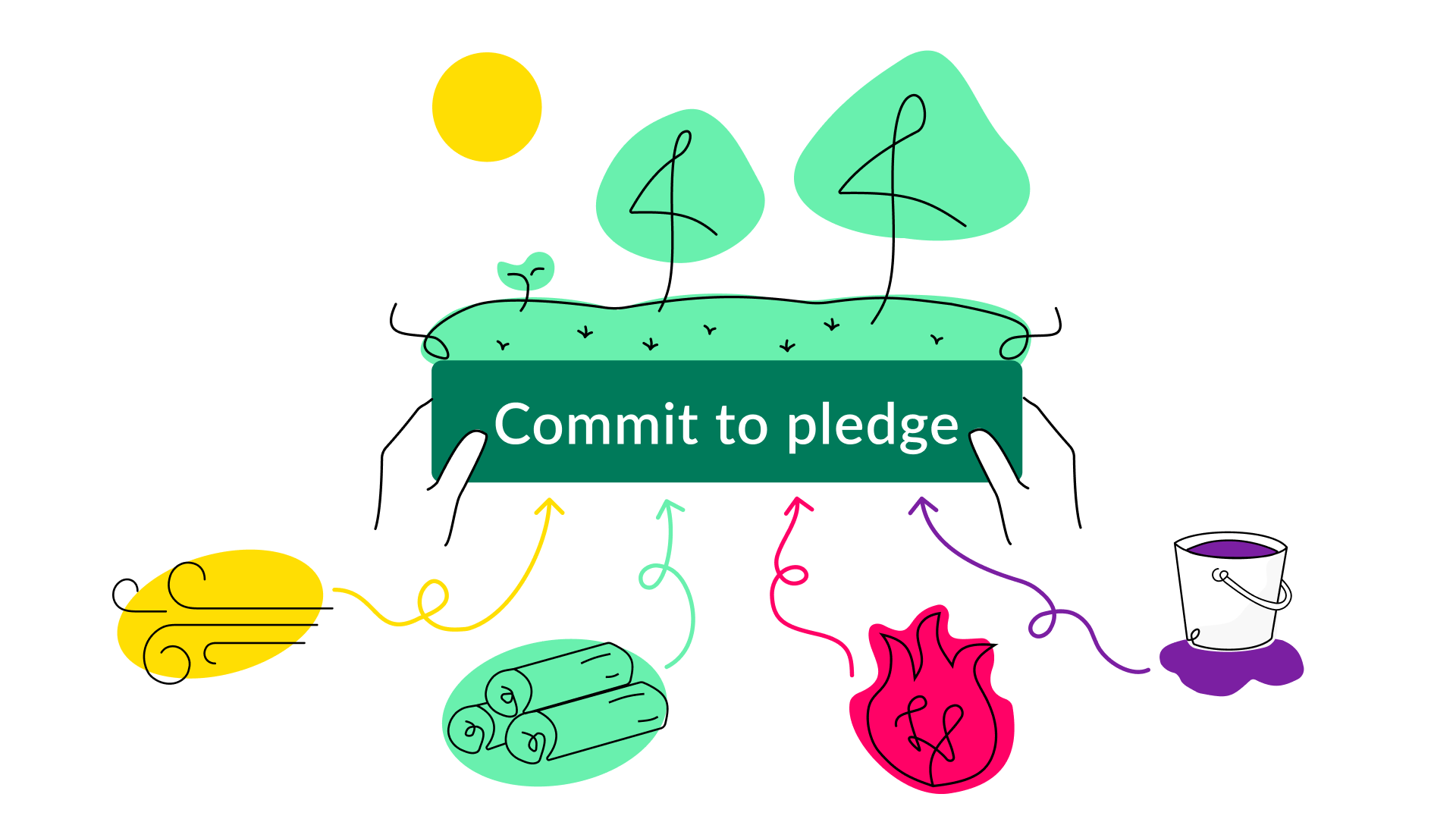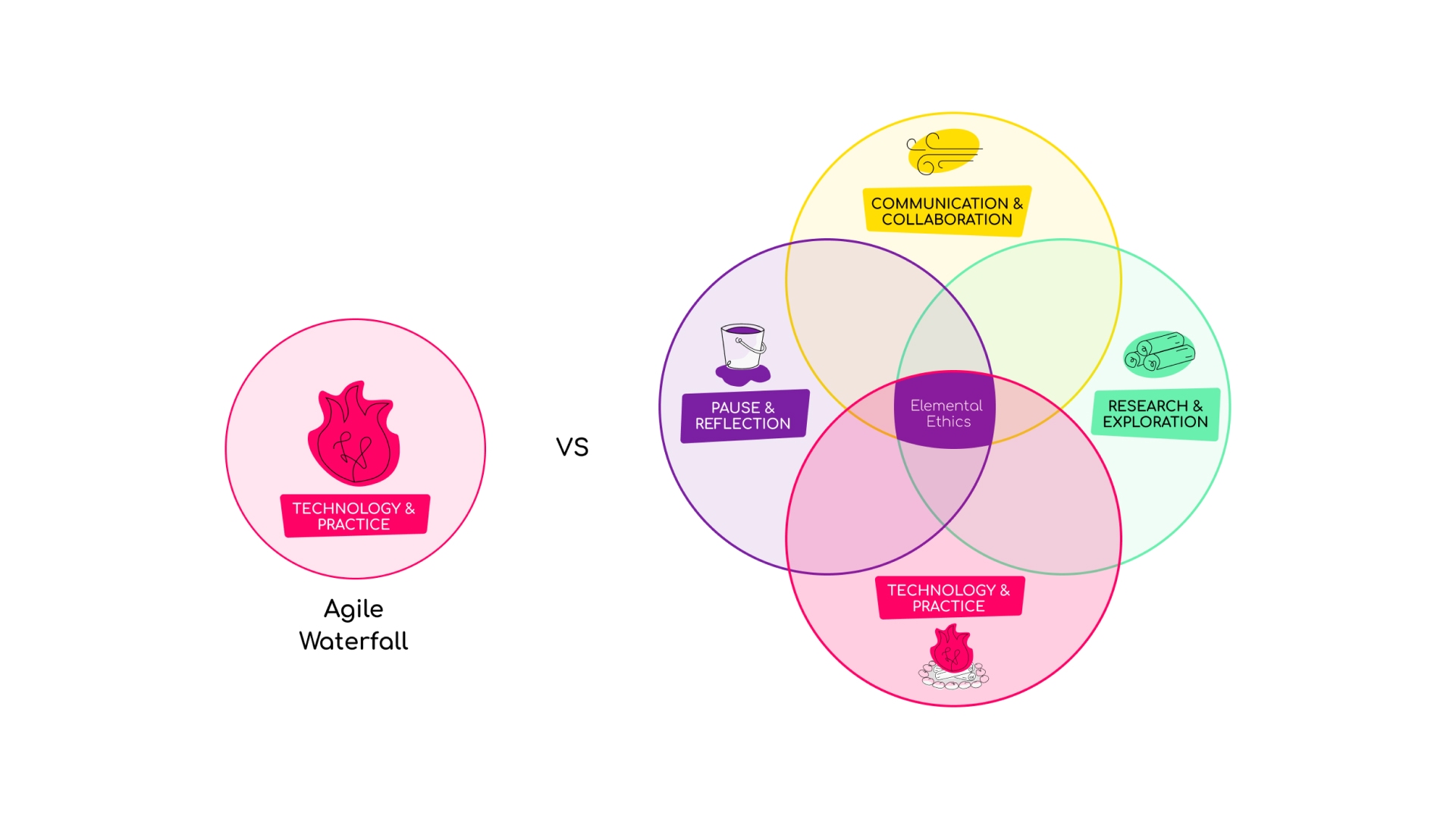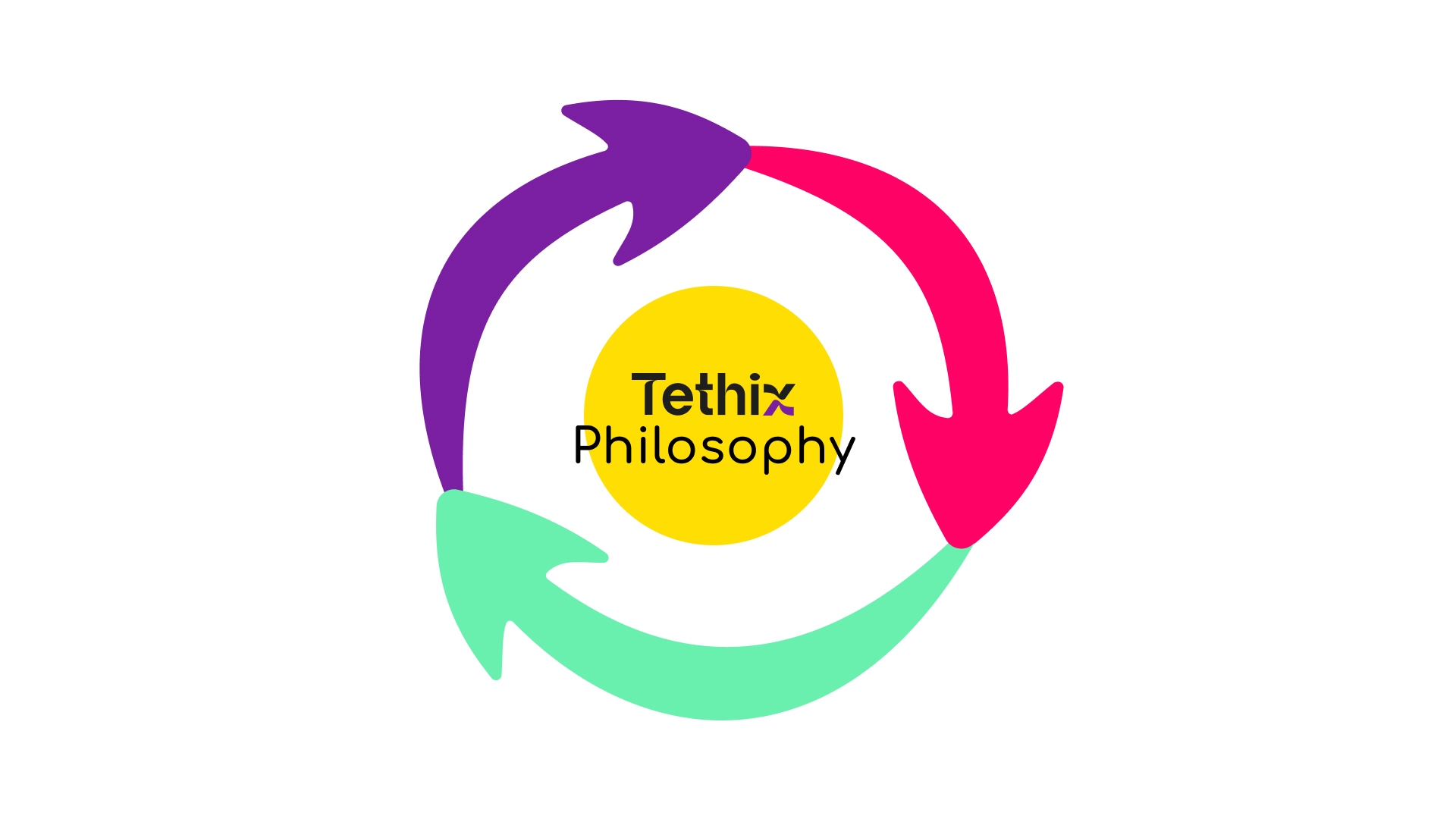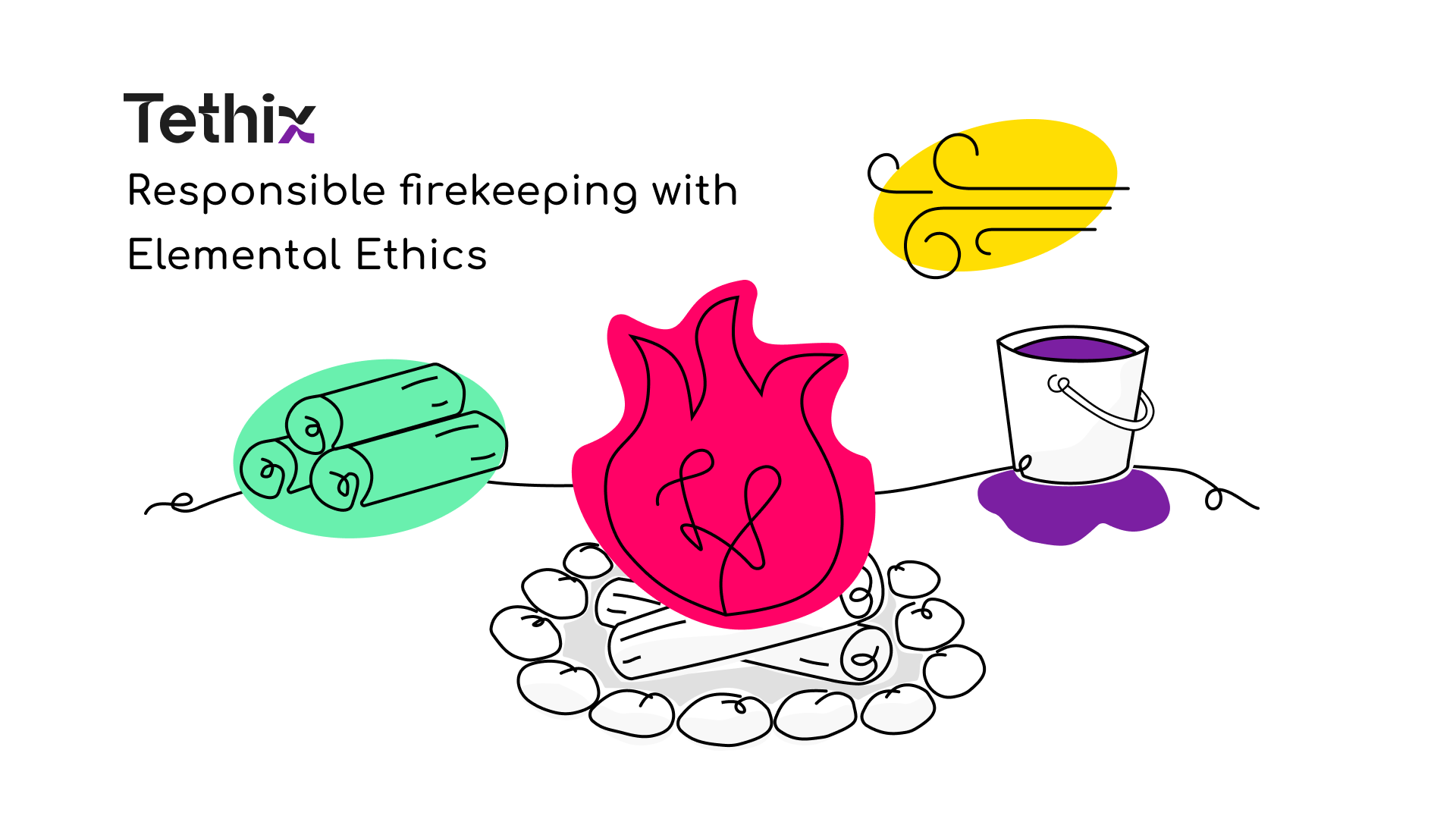Digital technologies have changed the pace and possibilities of work. They now enable us to collaborate across places and timezones. But even as new technologies allow us to transcend space, our bodies still intuitively look for familiar spatial clues in digital places where we do our work.
We don’t always realize how often we use the language and rules of physical spaces in digital spaces. We say things like “I’m not sure this is the right place to post this” on Slack or other places, mindful of unspoken rules tied to places. With many of us working remotely, digital tools like Slack are now our places of work, and we should think about the stories we tell about these places. Yes, places, not just tools.
Calling digital places tools diminishes their power and possibilities. Collaborative tools like Slack are not tools like a hammer that you can wield on your own. Collaborative tools aim to support us in the creation of a shared context, shared understanding, thus taking on the characteristics of place. Slack is closer to a campfire than a hammer.
We spend a lot of time inhabiting these digital places of work and develop complicated relationships with them. Which is why I invite you to join me in this reflection on the stories we currently tell about our digital workplaces. And an exploration of how we might imagine and tell different stories that lead us to designing digital workplaces that help us embody responsibility and cultivate a culture of collective wisdom and care.
You might even call this an exploration of the future of work, but I hope you also come to see it as an invitation to increase our possibility space. The future of our work is not set in stone yet, we still have the power to collectively imagine it by telling different stories.
The workplace stories we’re currently telling in digital places like Slack
Our digital technologies are infused with values and stories. When we look at digital workplaces of today, we see echoes of the story of productivity, of people as machines, individuals, resources to be managed and measured. We can see the story of people as separate, even above nature. People in service of the company and its profit motives, KPIs, OKRs and other abbreviations that abstract away our humanity. Workplaces as places where we come together to “get things done”, “deliver business value”. And a “productivity platform” like Slack is the digital workplace you can join from anywhere, even as you walk your dog or pick up your children from school. You’re never more than a tap away from your place of work now, anyone in your organization just a DM or mention away.
While it might seem ubiquitous now, Slack was launched to the public ten years ago, its name derived from an acronym for “Searchable Log of All Conversation and Knowledge.” Its IRC-like approach to communication actually challenged some work stories we used to tell. Slack started blurring boundaries between business and personal and flattening hierarchies by introducing a virtual water cooler, a place where emoji responses and reaction GIFs don’t feel out of place. A place that acknowledges that people like to chat.
Yet, Slack and other digital workplaces are still telling the story of a closed office building with security at the door. Not letting in the people you’re designing for. With security escorting you out as soon as you are laid off, without the chance of grabbing a box of your personal belongings. Slack is owned by the organization, the organization decides who you get to talk to, even as Slack Connect builds bridges between organizations. But no bridges are built to the people you’re designing for, let alone any non-human stakeholders.
The places in your Slack workspace are called channels due to its IRC origins. Every channel is the same for everyone. You can choose which links to pin to the top, but there’s no way for a team to make a channel their own. No way to build a space that reflects the preferences or playfulness of the team. The main difference between different Slack workspaces you might use is the logo. Switching between organizations doesn’t feel like walking into a different workplace at all, were it not for the people and slight variations in channel naming conventions. Self-expression through theme colors and status updates is an individualized endeavor, emphasizing the story that you’re in this on your own, not as a part of something greater. And that you can easily find yourself in a different workplace tomorrow.
This year’s Slack redesign introduced a tab called Home. But instead of people or rooms, this home is primarily made of channels. Channel is an interesting word with multiple meanings. It implies passage, transmission. Its early meaning was related to water channels, and it later metaphorically expanded to communication flows. We used to tune into radio and TV channels, and now we’re tuning into a multitude of channels in Slack, trying to keep up with the incessant flow of conversations.
It doesn’t feel like Home, it feels like playing a game of catch up, saving messages to read later, and soon we’ll have Slack AI summarizing everything you’ve missed in your Home while you were away. Because Home really isn’t home, but a stream of conversations to keep up with, so perhaps channel is an appropriate word after all.
And people in your Home aren’t people, but direct messages. You have to click More to find a list of all people, whom you can filter by account type. “Hi, nice to meet you, I am a regular member, what account type are you?” Any why is it that people become users when joining a group, but sometimes they’re also called members? And don’t even get me started on huddles…
These are just some of the strange stories the digital places we visit almost every day tell us if you take the time to look for them. Whether you pay attention to these stories or not, the hidden stories of our digital workplaces shape our language and our relationship to work. And now they must evolve to meet other stories that are calling for change in the way we think about and relate to work.
Conflicting, emerging, challenging stories that are calling for change
Stories are a reflection of place and our relationships. And we’re currently seeing an emergence of stories that are reflecting our changing places and relationships. If I was writing a 100+ page-long business report, I’d call these “emerging trends”. But humans are a storytelling species, so let’s call them what they are: stories haunted by the ghosts of the past, shaped by the worries of the present, and reflecting our dreams and hopes for the future1.
Stories are alive and constantly shapeshifting, so it can be hard to pin them down. So this is a very simplified overview of the four branches of stories that are already challenging our current stories about work and places of work:
- Environmental stories: The story of the climate emergency, exceeding planetary boundaries, finding ourselves in uncharted territory, the stories of pandemics. These are the stories we try to ignore, but experts are desperately screaming from the rooftops. We’ve ignored or greenwashed these stories for so long, we’re now being forced to pay attention as climate catastrophes start hitting close to home. And I mean that literally, as we are now witnessing our offices and homes being flooded, evacuated in wildfires, with more to come, eventually coming for the data centers hosting our digital places as well.
- Societal stories: The stories of colonization and exploitation go hand in hand with environmental stories. Ecosystems and people are exhausted from centuries of being labelled as resources to be exploited, displaced, and blamed. Technology has enabled us to compare notes and amplify these stories, making us more aware of indigenous stories we tried to erase from the face of the planet. We’re now remembering and starting to listen to different stories of societies and ways of seeing and being with places that talk about respect, custodianship, care, community, belonging. Stories that talk about different relationships with time and place. Different stories about the role work plays in our lives. We’re slowly remembering there are more stories than just capitalism vs. socialism.
- Technology stories: Speaking of exploitation, Big Tech has violated our trust, sold our attention and data to the highest bidder for long enough to lose our trust. We don’t bother reading the Terms and Conditions because we know we don’t actually have a say in what’s acceptable when somebody else decides which tools you have to use. The story of digital technologies has been closely linked to productivity, and we can indeed do more things on our own than ever before. But instead of working less, we’re expected to just do more. And this is again the story we are being told as the wildfire of generative AI engulfs our work tools and places. Yet, we cannot help but wonder what it means to be human when we see companies trying to take away creative work from people. The whispers of how AI could help us work less and have more time for human being are growing stronger.
- Work stories: Technology has also enabled many of us to work from our homes, rethinking and questioning the role expensive office buildings play. As digital technologies enabled us to do more without getting paid more, we’re now seeing generational shifts that question the role work plays in our life and how we show up at work. When working full time is barely enough to cover the rising costs of living, the story of “you just need to work harder” no longer matches our lived experiences (not that it ever did for most people). It’s getting harder to believe the story that we’re a family when companies making record profits lay off thousands overnight. It’s getting harder to believe the story of caring for people when we see companies that like to boast about responsibility dissolve their ethics teams, so they can move faster to pour more gasoline on the wildfire of AI.
- Personal stories: Amidst all these competing and conflicting stories, we’re collectively exhausted, chronically ill, and finding it harder to make quality time for the people we actually care deeply about. Mental health crisis, loneliness epidemics, lack of purpose and meaning are all stories that make us question the business as usual stories we’ve been told. And we’re starting to wonder, is this really the best we can do?
So, it’s becoming increasingly clearer that we, as workers, are exhausted, questioning the meaning of work, resentful towards technologies that were supposed to empower us, living on a warming planet facing ecological collapse. It’s easy to hear these stories and feel hopeless, and thus tempted to continue business as usual for as long as we can rather than deal with the painful reality of living in an unsustainable system. But change is coming whether you acknowledge it or not, and these challenging stories also represent an opportunity and responsibility to imagine and tell different stories.
When certain stories get too loud, it can be hard to remember that we can use our moral imagination and collective futurecrafting to increase the possibility space. The binary nature of computers can mislead us into thinking the dystopian “black mirrors” and extremist techno-optimist “white mirrors” are the only two paths we can take. However, when you take a closer look at human history, you discover that change and progress isn’t a linear story. Many stories that we’re told about the inevitability of human inventions such as work don’t hold up under scrutiny. There are rainbow mirrors we can collectively imagine if we give ourselves the permission to increase the possibility space.
So, what are the stories about digital places of work we could tell to help us embody responsibility and cultivate a collective culture of wisdom and care?
Increasing the possibility space for digital workplaces of the future
When designing future digital places for work, we could go beyond cerebral cognition. Use what we now know about how we learn and perceive the world and design not just for the human mind, but for the entire body, all senses. And design for non-human stakeholders as well to ensure mutual survival and thriving.
If we decided to design for human beings as the custodian species, we would design for seasonality rather than always-on, design for responsibility rather than individuality, design for communing rather than competing, design together rather than designing for or at. We’d design for serendipity, for visibility of consequences, for human scale and smaller groups rather than the average approximation of people and digital scale.
We would be more mindful of the language we use, and seek grounded, complex metaphors with integrity that Tyson Yunkaporta describes in Sand Talk. We would go beyond tolerating towards celebrating cultural and other differences that are a reflection of the diversity and richness of our species and the physical places we inhabit.
As an example, let’s take a closer look at how we might rethink and redesign time and place in a collaborative context. Our world is built on timekeeping, which certainly helps to coordinate and collaborate across timezones. But it also imposes a linear view of time and compresses the richness of place into “local time”. Now, I do find it helpful to see the local time of people in Slack and I like the ability to schedule messages at a time when I will not disturb their rest.
But imagine how we might relate to each other differently if I could get a fuller sense of your time and place. If I could see your local weather, season, holidays, news, and more when I clicked on your name. Or if I could get a spatial view of where everyone is on a map (while still preserving privacy, of course). I’m not talking about detailed location tracking here. Instead, I think it would be pretty awe-inspiring to see a visual reminder of the moon’s and sun’s position relative to different places on Earth, for instance. Contextualizing time and place like this might inspire not just awe – an important emotion often missing in our workplaces –, but also humility, empathy. And help us attune to the natural cycles we usually try to override with coffee, artificial lighting, and other tricks.
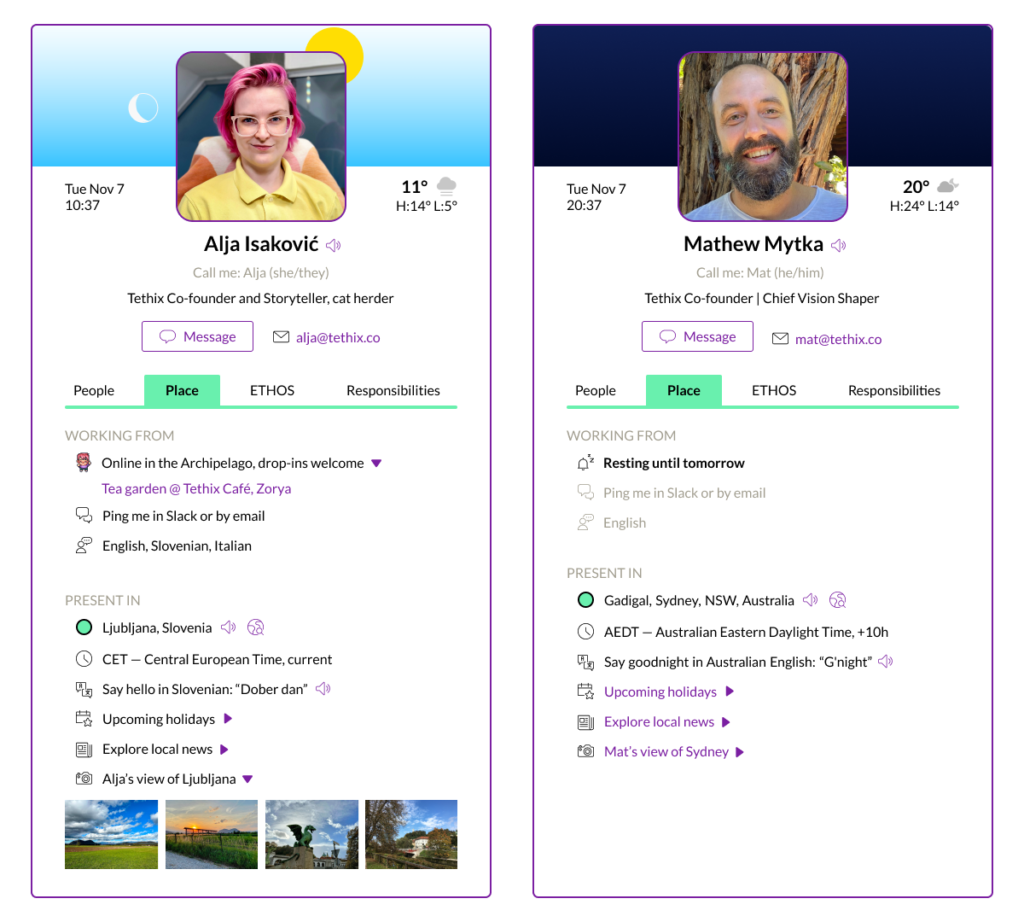
Would this make us more productive? Not necessarily. But it would certainly support deeper relationship building and remind us what it is that we are working for. Support quality over quantity. Technology built for human bodies should make it easier to join smaller campfires, and not make people feel guilty about missing important conversations when they close their digital workplace to rest and recharge.
Too often we’re trying to reproduce bad design patterns from physical offices instead of exploring designs made for human bodies, respecting human needs. We need to figure out how to support intimacy, safety, trust in small groups even when we’re working at scale because we need to design places for collective intelligence to tackle the big challenges of humanity. There are lessons to be learned here from massively multiplayer online games where people are encouraged to join forces to defeat powerful bosses, but also in nature. We could create a nature-inspired topology of space that reflects culture, connected by digital mycelial networks.
We could allow small groups to customize their places to reflect and feed their shared story. When you enter a digital place inhabited by a team of engineers, it might feel different from the place inhabited by designers. Customizing physical office spaces is expensive, but relatively easy to support in digital places. A digital place could also be designed to be carbon aware, shrinking in response to grid intensity to lower its energy demand, and dynamically respond to climate events.
These are just some examples of how we might increase our possibility space to design digital workplaces for diverse people to collaborate with less burnout, more meaning, mindful use of technology, while respecting planetary boundaries. I’m sure you can find additional paths if you allow yourself to question the stories that are no longer in the right place.
How do we start imagining and telling different stories?
So, I hope you’re now wondering: how do we find the stories that match the place we’re at? How do we go about finding paths to digital workplaces that support collective wisdom and care?
You’ve actually already taken the first step by reading these words and feeding your moral imagination! The next step is to form a fellowship. We’re not trying to reach Mordor here, but the pathfinder’s road is still long and arduous and best faced with friendly faces, as most things in life.
So, once you’ve found a friend or two – it’s ok if you’re not friends yet, you will be at the end of this journey –, sit together around the campfire, physical or metaphorical. And start questioning the digital places you’re currently inhabiting. What stories are they telling you? Do these stories resonate? What exhausts you, what brings you joy, what inspires you?
And then start telling different stories. You might be inspired by the stories I just shared with you, or imagine entirely different ones. As you imagine new stories, start drawing different interfaces for your places, and share those with more people to see what resonates.
I do think new stories are needed to replace those that no longer sit right with us. This post was an attempt to explore some of the new stories that might emerge. With the work I do with Tethix, we’re now trying to weave this thinking into the ETHOS suite of apps we’re building to embed ethics into everyday tools and processes. And you can already feel some of these stories as you visit the Archipelago we built in Gather, a place where we regularly come together to explore stories like these.
We still use Slack as the searchable log of some conversations, but the real conversations happen in our virtual tea garden in the Archipelago. Even though it is technically just a bunch of pixels, the garden is a place that brings us closer, facilitates coworking, and inspires deep conversations. And even welcomes visitors from outside our organization seeking a relaxing place to hang out in, with the joy of unplanned serendipitous encounters on kairos rather than kronos time.
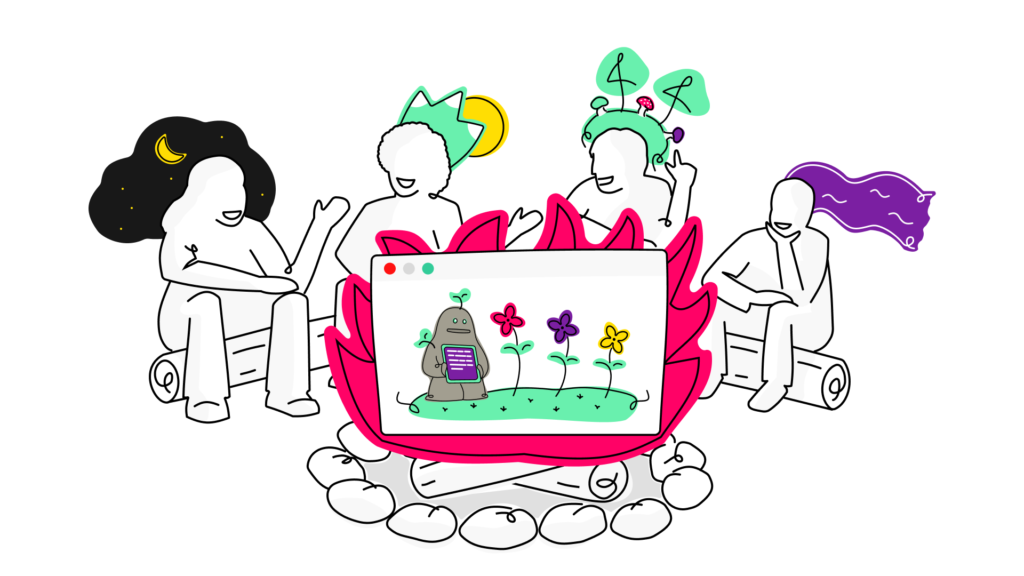
Acknowledgement
This post is a result of collective yarning and imagining. Thank you, Justin the Elder, for visiting our virtual tea garden and seeding the inspiration for a yarn during which these stories started taking shape. My colleagues and friends, Mat and Nate, thank you for yarning with me in our tea garden.
- See my post The story of stories and the land if you’re in a mood for some poetry. ↩︎

